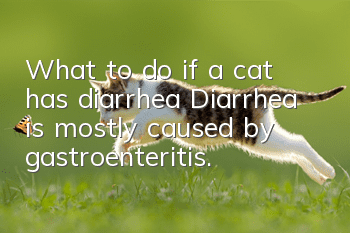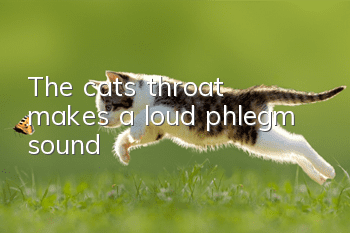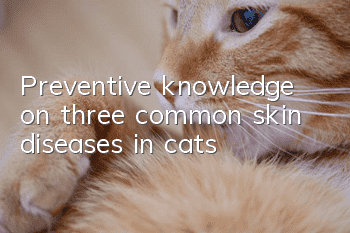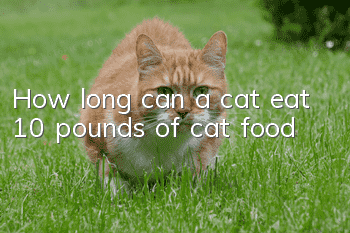What to do if a cat has diarrhea? Diarrhea is mostly caused by gastroenteritis.

Cat diarrhea is a syndrome characterized by maldigestion and malabsorption. The clinical manifestations are that sick cats have increased defecation frequency, high water content in feces, unformed feces, and even watery ejaculation.
The causes of cat diarrhea are quite complex and diverse. Some are caused by viruses, such as feline distemper (also known as infectious enteritis); some are caused by bacteria, such as pasteurellosis and colibacillosis; and some are caused by genetic defects. , such as Persian cats, diarrhea is mainly due to the lack of enzymes in the intestines to decompose lactose, maltose, sucrose and other enzymes. These sugars cannot be fully digested and absorbed by the intestines, leading to diarrhea; intestinal parasitic diseases, such as stuffworms and tapeworms Both worms and flagellates can increase intestinal motility and cause diarrhea. In addition, pancreatic disease, congenital structural defects in the intestine itself, fat-soluble vitamin deficiency, intestinal tumors, etc. can also cause diarrhea. However, clinical diarrhea in cats is mostly caused by gastroenteritis.
Cat diarrhea caused by gastroenteritis is mostly caused by cats overeating, eating spoiled food and indigestible bones, accidentally eating hair, plastic toys, paper, wool and other foreign objects, accidentally eating aspirin and other irritating drugs and Corrosive drugs, such as arsenic, mercury, lead, carbolic acid, etc., as well as cold, malnutrition, sudden change of feed and other reasons. Regardless of the cause of gastroenteritis, a common symptom is diarrhea, which can lead to dehydration and weight loss in cats. At this time, the cat's main symptoms include lack of energy, loss of appetite, vomiting and abdominal pain, diarrhea, and fishy feces. Intestinal mucosal bleeding also includes symptoms such as black or black-green stool, or blood streaks or blood clots.
If diarrhea is caused by gastroenteritis, drugs such as furazolidine, hyponitrite, and oxytetracycline can be taken orally, and isotonic glucose-sodium chloride solution can be injected intravenously. Diarrhea in Persian cats is often caused by too much starch in the feed, so the amount of starch in the Persian cat’s diet should not exceed 25%.
- Can a kitten that is over a month old be bathed?
- Little kitten has diarrhea
- What breed is the blue and white cat? Is your family purebred?
- Can cats be couriered? How to transport cats by air?
- How to improve cat’s immunity?
- Why do I suddenly become allergic to cats when I have always had cats? I was not allergic before.
- Cultivate cats to develop good eating habits, cat feeding!
- What are the symptoms of parvoma in cats? What are the manifestations?
- How to train American Shorthair? The correct way to train American Shorthair cats!
- Why doesn't the kitten like to meow?



